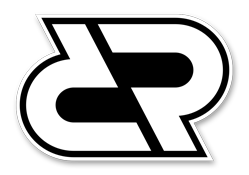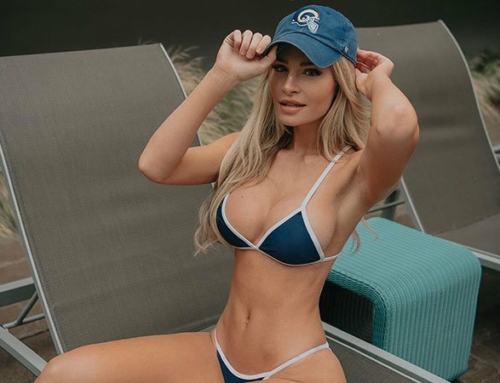
Writer Robert Towne so hated the finished ‘Greystoke: The Legend of Tarzan, Lord of the Apes’ that he put his dog’s name on the credits. As the new ‘The Legend of Tarzan’ opens, director Hugh Hudson looks back at his 1984 epic.
In the early 1980s, rumors began to spread about an unfinished screenplay that soon reached mythic proportions. Few people had seen it in the days before the internet made even the most inflammable material available for public consumption, but it was said to be 170 pages long and — astonishingly — had no ending.
The screenplay had a one-word title, Greystoke, but everyone knew that this was the story of Tarzan, lord of the apes, adapted from the 1914 novel by Edgar Rice Burroughs. It was the masterwork of Robert Towne, who had already created such classics as 1973’s The Last Detail, 1974’s Chinatown and 1975’s Shampoo.
No one had any doubts about Towne’s skill. But there were serious questions about his ability to finish the script. He was known to write slowly, even laboriously, and Greystoke only followed its protagonist halfway through his story. What would happen when he left the jungle for England? How many more pages would it take to reach the climax of the tale?
Only Towne knew. He had sketched out the rest of the screenplay and may even have written a rough draft of it that no one else had seen, but he was keeping the secret to himself — or at least until someone was willing to greenlight this expensive picture, which would require exceptional casting; real-life apes (or gifted mimics); a jungle shoot and aristocratic British settings.
Towne came close to getting his greenlight when Bob Daly was named chairman of Warner Bros. in December 1980, with Terry Semel as his right-hand man. In that pre-tentpole, pre-franchise era, the job of a studio chief, above all, was to pick the best material. Daly and Semel knew how good Greystoke was and determined to make it one of their first pictures.
There was one problem as far as Towne was concerned: He needed money to complete his directorial debut, the 1982 sports movie Personal Best. In exchange for the studio’s financial support, he gave up his rights to Greystoke. When Personal Best tanked, the studio looked elsewhere for a director.
The man it turned to was Hugh Hudson, a newcomer to the movie world who had directed only one feature film,1981’s Chariots of Fire. Daly and Semel had come to know Hudson when Warners bought the domestic rights to Chariots for all of $1.2 million (a deal shared with the Ladd Company), then carried the little-engine-that-could all the way to a best picture Oscar.
Hudson was no neophyte. While today’s top executives often prefer to hire relatively untested (and easily manipulated) helmers for their biggest projects, Warners wanted the best, and Hudson had already had years in the trenches as one of England’s top commercials directors. He was among a rarefied group that included Ridley Scott, Alan Parker and Adrian Lyne, all of whom would become feature directors around the same time.
• • •
Here, Hudson picks up the story in his own words.
“When I made Chariots of Fire, Warner Bros. were desperate to make me do another film. They wanted another contract with me, really. I read a lot of stuff that they had and I chose Greystoke, although it was only half-written. It was half a screenplay when I received it.
The first half was written quite comprehensively, though it was very long, and the second half was only sketched. Robert Towne was a wonderful writer, but he had agreed to give up Greystoke for the extra money for Personal Best. Tarzan had been made 25 times or something as a film and television series, but Greystoke was so interesting,
There were many examples of babies being brought up by animals, not only in history but in reality. [Francois Truffaut’s 1970 drama] The Wild Child was based on a true story, and I wanted to do this like it was a real story, and I think Towne did, too. If he’d stayed, he would have continued to do it more or less in the direction that I took.
I briefly went to see him, just out of politeness, and he was reasonably courteous. He was staying at a hotel, the Sunset Marquis or one of those places on Sunset. But I didn’t [try to get him to finish the script]. He’d walked off it. He’d been bought out. He didn’t want any more to do with it.
I was interested in the duality of the piece. For half of it, [Tarzan] never speaks a word of any language, and then suddenly he meets other human beings and he has to change, and then he’s brought back to England. And of course, I was the ideal person to do the English side. That kind of upper-middle-class or aristocratic world, I understand perfectly. My family were landowners. I went to Eton [the exclusive private school]. But I hated it. I was a rebel to my family. I just didn’t like elitists. I used to work for the Labour Party.
That’s what I loved in the story: There was a rebelliousness running underneath it. He rejects his background. Half of him is the Earl of Greystoke and the other half is wild.
I worked with a writer called Michael Austin, and worked very, very closely on the restructuring of the piece. It took a long time because, first of all, it was 170 pages. How do you cut that down by 50 percent? We didn’t want to make a film that ran more than two and a half hours, so it was cut down a bit.
I was given nine months to do the screenplay; find the place to shoot [the film]; and start preparing how we were going to do the apes. I insisted on this time and they agreed. They were wonderful to work with, Semel and Daly. It was their first production, and it was $30 million then, a lot of money.
We went around the equatorial world looking for locations. We looked in Borneo, Sarawak, Northern Australia, the American tropics, Miami, but that didn’t work and in the end we came back to where the story actually takes place, in Africa.
The film was made at a time when there wasn’t any type of CGI work. There are only three shots that are in any way ‘tricked’ in the film — and they were done with glass paintings by Albert Whitlock, Hitchcock’s favorite glass [matte] painter, and the way he did glass paintings and miniatures was classic in the film industry. He did the opening shot and one shot where there’s a volcano — they were all landscapes, basically.
Photo: Hugh Hudson
The challenge was how to make the apes work. Towne had already done a lot of experiments with chimpanzees, I think, on an island somewhere. He had some sort of encampment so that apes couldn’t escape, but I discarded that idea [of shooting real apes]. We’d have taken hours and hours trying to make it work. We decided to build the apes and put them on small people’s bodies — mostly dancers and mostly female. We had a height limit of 5-foot-3.
We had a factory in London with about 80 people making [ape] suits, sewing them bit by bit. Thread-by-thread they sewed these extraordinary suits for about six or eight months. And then they had to produce mechanical hands that had five or six movements in the fingers, and heads with movements in the mouth and the eyebrows and the ears. [Special effects artist] Rick Baker did an extraordinary job. He’s a genius.
Then we had to train the [ape performers] into a hierarchy from the alpha male down. They had to learn how to treat each other like a family. We had help from Roger Fouts, who was an expert on chimpanzees; he trained chimpanzees to speak a language. And then we had [actor] Peter Elliott, who became an expert in ape mimicry.
2001: A Space Odyssey did the same thing about 15 years earlier. But they were slightly different. When you look at Stanley Kubrick‘s apes, they’re further down the [evolutionary] chain. They’re nearer to humans. I was trying to get more animal-like. I had a couple of conversations with Kubrick. I got to know him quite well.
Real apes can be violent. One of the women [Ailsa Berk], who played the female ape Kala, was coming back from the training very late one evening in the tube [the London subway] and somebody threatened her. She reverted to an animal and started snarling — and he ran away into another carriage.
We had to find Tarzan. I wanted somebody unknown and Warners allowed me to do that. My theory was: If you have unknowns, they don’t come with any baggage, and then you surround them with really brilliant actors.
We went to several countries to find actors and tested four people: Viggo Mortensen and Julian Sands and a Danish ballet dancer and Christopher Lambert. It came down to Viggo and Christopher. We built a set to test them on and [gave them movement training]. In the end, I just felt that Christopher was the right person. He had this strange quality — somehow, because he was myopic, when he took his glasses off, he couldn’t really see properly so he would seem to look through you into the distance.
I found Andie MacDowell on the cover of a magazine and we tracked her down and she had the right look. I didn’t want her to be blonde because every Jane is blonde. But I didn’t really want to have a southern accent, and she wasn’t a trained actress. Later, I had the unenviable task of telling her we were going to re-voice her [with Glenn Close]. She didn’t like it. Oh, a terrible blow it was. But as a result she went and took acting lessons. And she became who she became.
• • •[Shooting got underway in Cameroon and later in London.]
By then, I was the producer of the film as well. I was going to be in partnership with [Chariots producer] David Puttnam on this, but he walked off the film. I think he felt he had lost control because it was a studio picture set up by Semel and Daly and they wanted to deal directly with me, and he had this other film going, The Killing Fields, that he probably wanted to do more. Stanley Canter [who’s credited as producer alongside Hudson] had a deal with Warners and the Edgar Rice Burroughs estate, but he wasn’t involved in the making of the film.
We went to Africa twice and [much of what] you see in the film was built there. There’s an ivory station and a whole village in the swamp on the edge of the water in Cameroon, and we built a tree house. There were terrible problems when we shot in the jungle because we had to take the [ape] suits, and the humidity and the heat were almost intolerable.
We also had pygmies that came out from areas in the Congo — a whole tribe of pygmies that had never been out of the deep forest before. They came with families and food and utensils to perform in the film. We managed to find somebody who spoke their language and the local Cameroon language, so we found a way to communicate. They worked very well, they loved it. But one evening, they just disappeared. They went back into the forest, and we had to find them and bring them back. But they were very amenable.
Then we had these fishermen from the area and they went on strike and wanted more money. We were using guns in this part of Cameroon, near the coast, and all the fisherman suddenly came to us and said, ‘Your guns are frightening the fish. We’re losing our income, so you have to pay us more.’
Once, we had to cut a tree on the river and the [local] chief was beside himself. It became a ‘sacred’ tree. One of the ADs [assistant directors] had to go down to the river and a bottle of gin was given to the chief and he spat it out all over the assistant and he had to strip himself off and go into the river — and then we were allowed to use the river and cut the tree.
Photo: Christopher Lambert and Hugh Hudson on set
Some people got sick. One or two people [playing apes] collapsed. The rubber on their suits melted. But we had a doctor and nurses. It was very well planned.
It was a long shoot that went on for months, and the studio got very nervous because it was a very expensive film and it was a long way away from them, and the executives didn’t want to come to Africa. They were very wary of the diseases, even before AIDS.
We couldn’t even see dailies. We didn’t see a single one. The film was sent back to our editor, Anne Coates.
It was very hard to shoot in the jungle because there’s no light. So we decided to build a jungle set for all the close stuff. We came to London and built it in the vast Elstree studio, on what was called the Star Wars stage at the time. We filled the set with plants and trees — fake trees and real trees. We could light it then and have a whole rain system, and we grew the plants over a period of nine months. It was an amazing endeavor. We were able to fence off an area and have leopards and a panther. You couldn’t control them in the wild.
The production designer had created this living jungle. Trees of vast size and growing equatorial plants, a water course and a lake where baby hippos wallowed and a family of leopards came to drink. Into this we introduced the human ape family of 20 apes of different sizes, and filmed for about eight to 10 weeks.
One day there was a strange creature lurking in the far end of the set-jungle, hidden by the jungle leaves. I approached with caution to find it was Sir Ralph Richardson, the eminent actor who placed Tarzan’s grandfather, aged 81. It was a day on which he was not on call, but he had arrived on his BMW motor cycle for the afternoon. Accompanied by his pet white rat, [which] he kept in his suit pocket, he had come to ‘see those apes.’ It was his last film and sadly he never saw the completed [picture].
What was complicated was to bring the film down to two hours and 20 minutes. We had an original cut of three hours, and it was at its best at two hours and 40 minutes, where you had a little bit longer [with Tarzan] growing up in the jungle and it was a bit more violent. The world of an ape is a violent world. And the studio was very nervous about that.[Chariots composer] Vangelis was going to do the music, and then he got writer’s block, and he just couldn’t produce it, so at the last moment we got John Scott and he did a very good job in a very short space of time.
It’s a film I love very much, though I haven’t seen it for a long time.
Robert Towne never liked it, of course. Why would he? It was his baby to begin with, but he sold his baby, to put it that way. And when we did the film, he put the name of his dog on it. [The dog, P.H. Vazak, is credited as one of two screenwriters, along with Michael Austin.]
The screenplay was Oscar-nominated. It’s the only dog that’s ever been nominated for an Oscar.”
Source: Hollywood Reporter – Top Story





